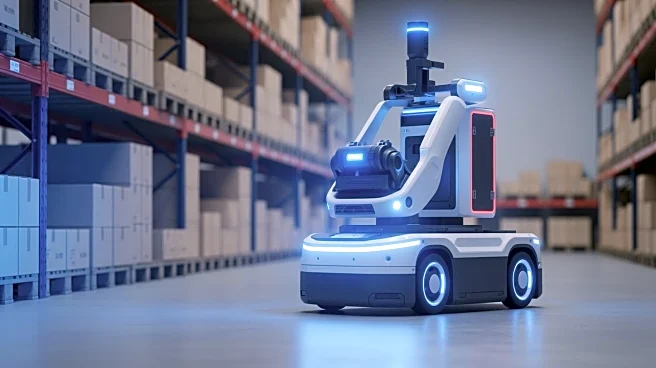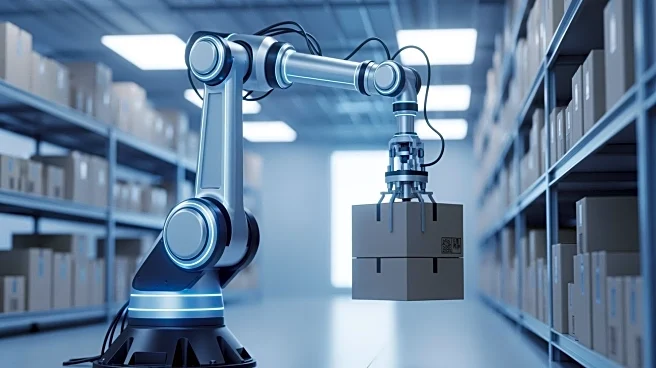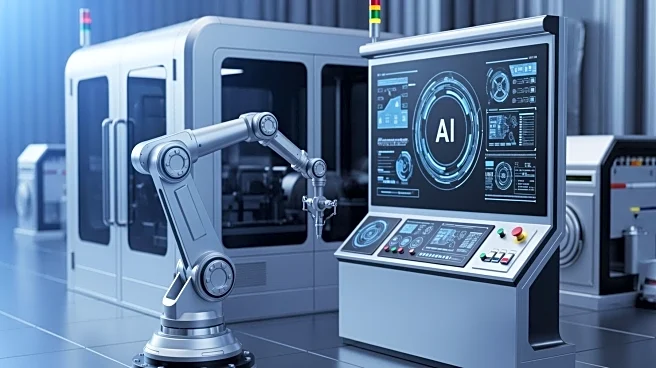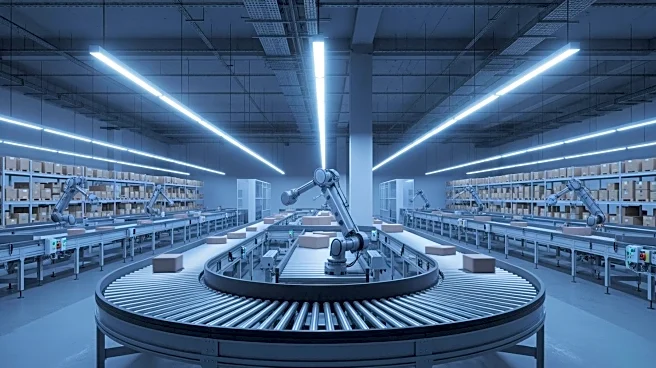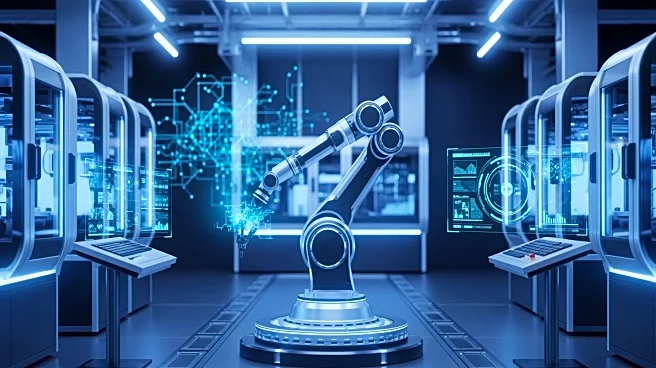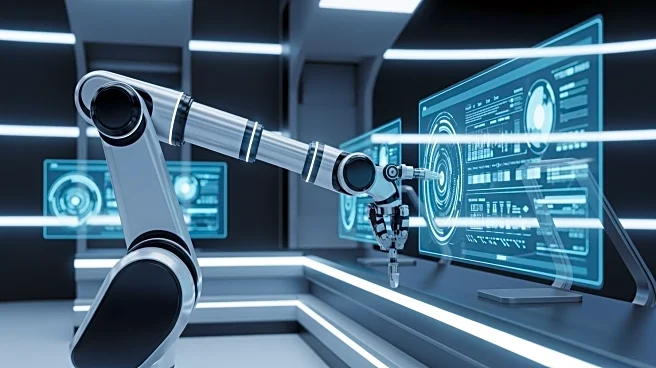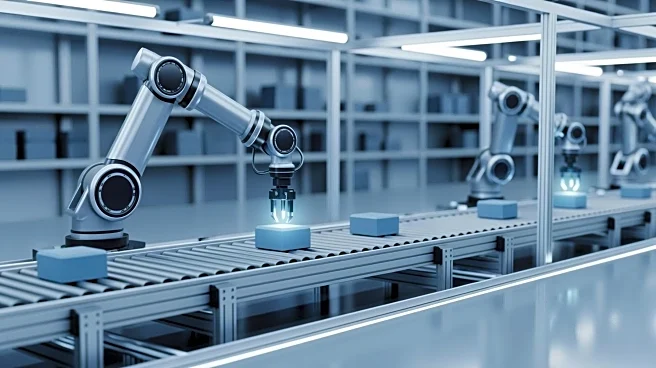What's Happening?
Cyngn has released a case study showcasing the deployment of its autonomous DriveMod Tugger at U.S. Continental, a manufacturing facility. The technology automates the transportation of pallets between
buildings, significantly reducing manual labor previously required for approximately 200 forklift trips per week. The DriveMod Tugger, designed to operate in clear, dry environments, enhances operational efficiency by four times, allowing the movement of four pallets at once compared to one pallet per trip with traditional forklifts. This deployment has enabled U.S. Continental to reallocate labor to more value-added tasks such as cycle counts and order picking, thereby improving overall productivity.
Why It's Important?
The implementation of Cyngn's autonomous technology at U.S. Continental highlights the growing trend of automation in industrial operations, addressing challenges such as labor shortages and safety concerns. By increasing efficiency and reducing reliance on manual labor, companies can optimize their workforce and focus on strategic tasks that add greater value. This shift not only enhances productivity but also positions businesses to better compete in a rapidly evolving market. The case study underscores the potential of autonomous solutions to transform material handling processes, offering a glimpse into the future of industrial operations.
What's Next?
As Cyngn continues to develop and deploy autonomous vehicle technology, more industrial organizations may consider adopting similar solutions to enhance their operations. The success at U.S. Continental could encourage other facilities to explore automation as a means to improve efficiency and reduce costs. Cyngn's technology, which promises a payback period of less than two years, may attract interest from companies looking to invest in long-term operational improvements. Future advancements in autonomous technology could further expand its applications, potentially leading to broader adoption across various sectors.
Beyond the Headlines
The deployment of autonomous technology raises important considerations regarding workforce dynamics and the future of labor in industrial settings. While automation can lead to increased efficiency, it also necessitates a reevaluation of workforce roles and skills. Companies may need to invest in training programs to equip employees with the skills required to manage and maintain automated systems. Additionally, the shift towards automation could influence labor market trends, prompting discussions on the balance between technological advancement and employment opportunities.
